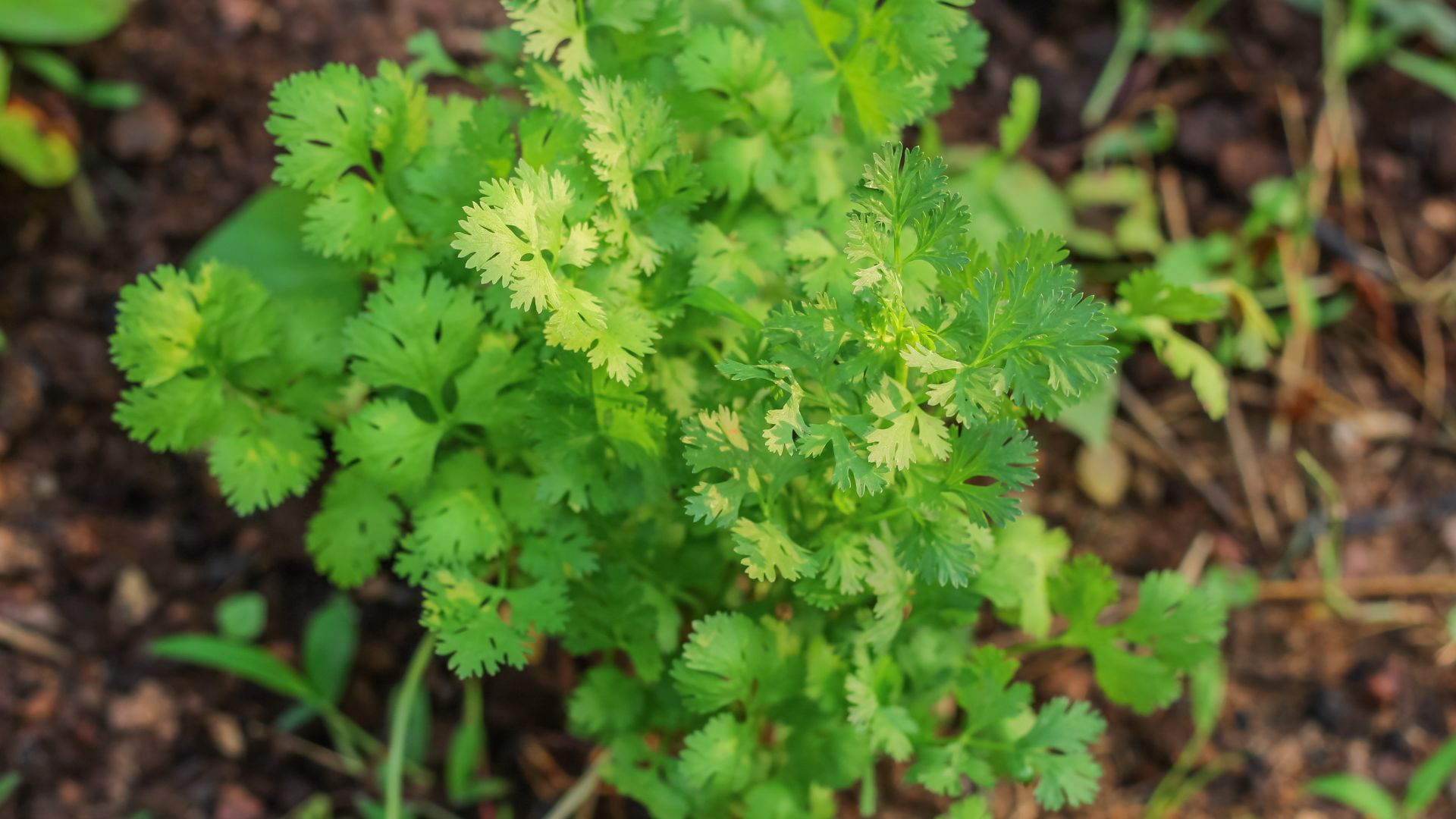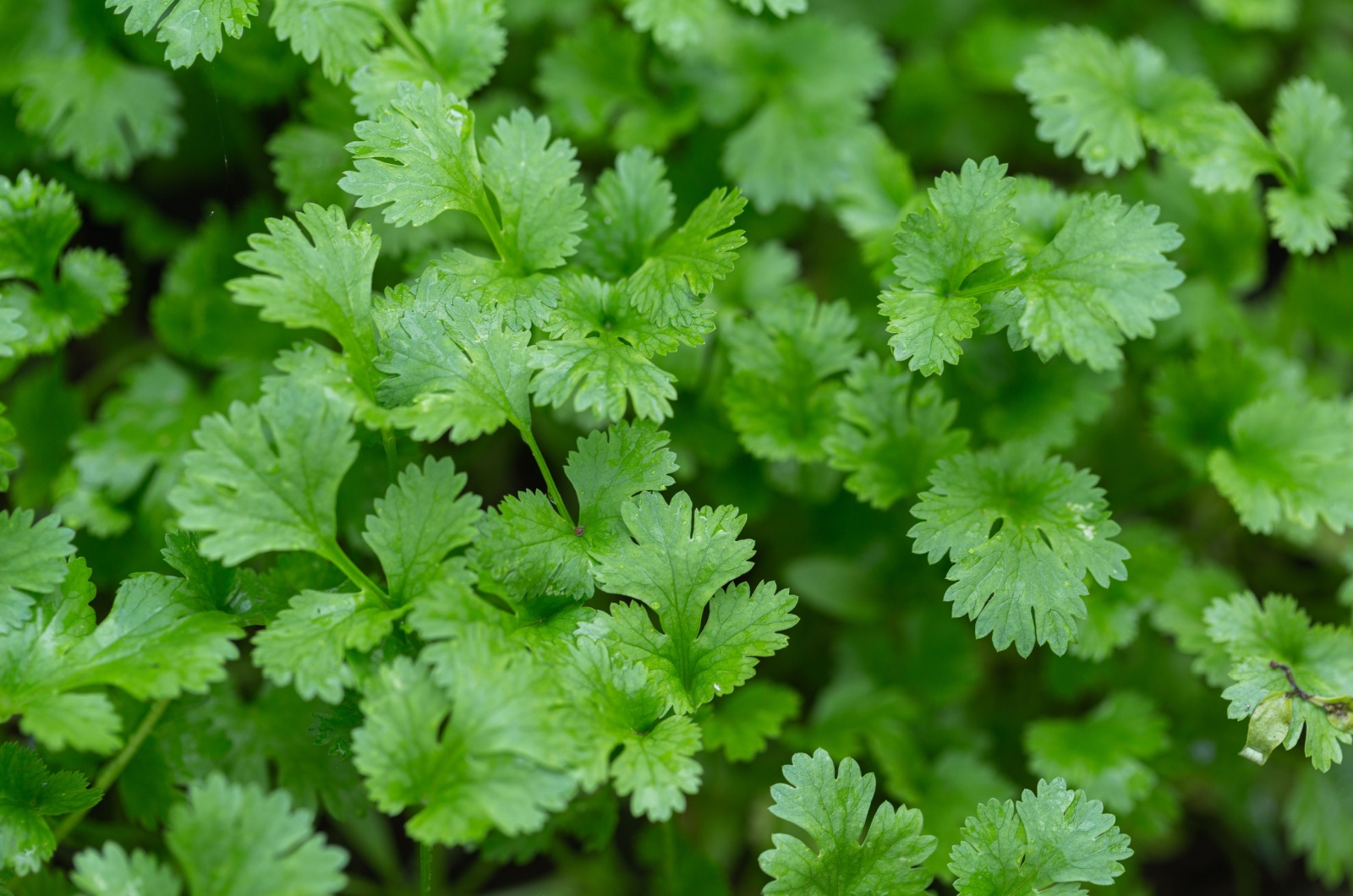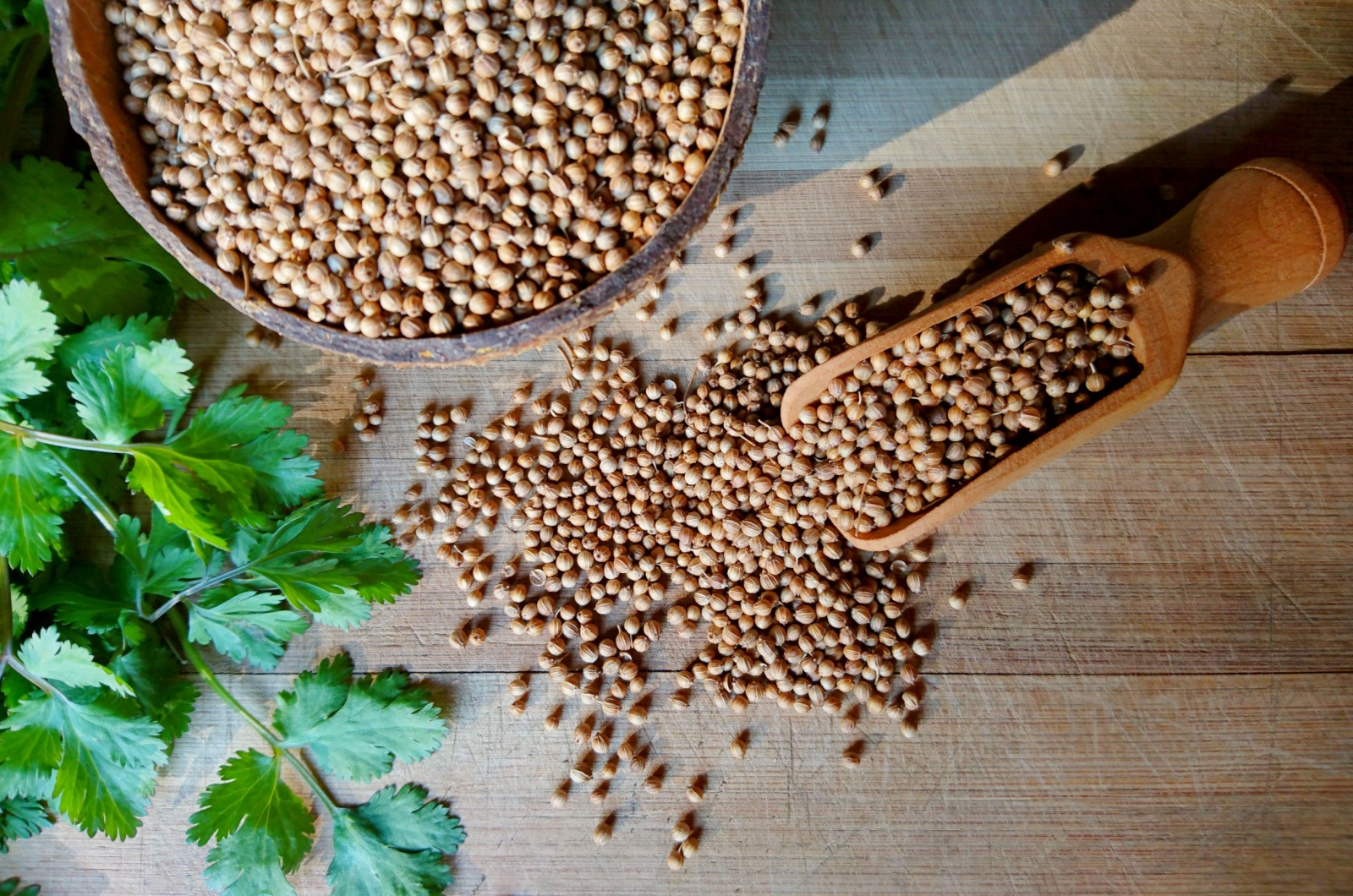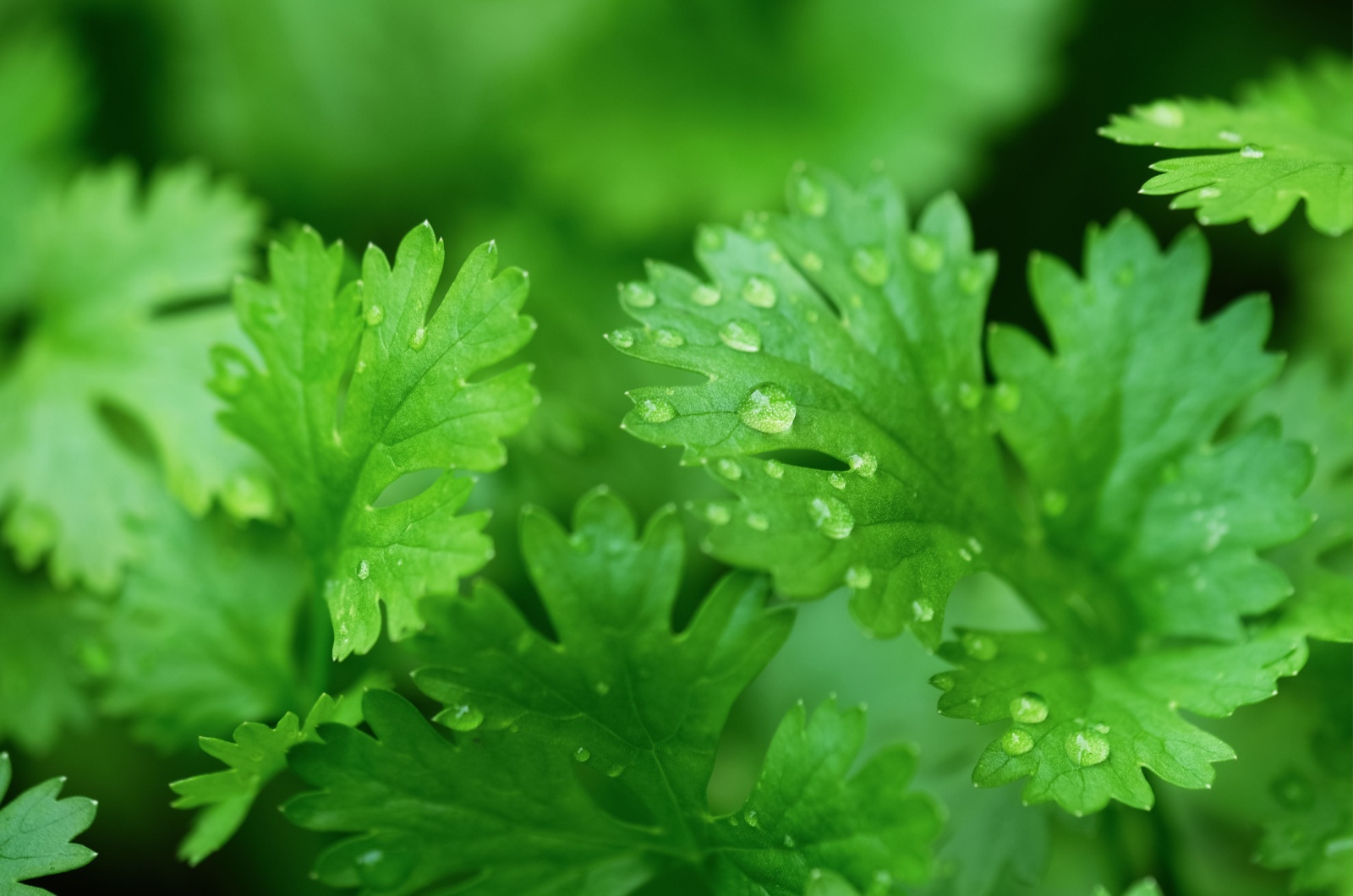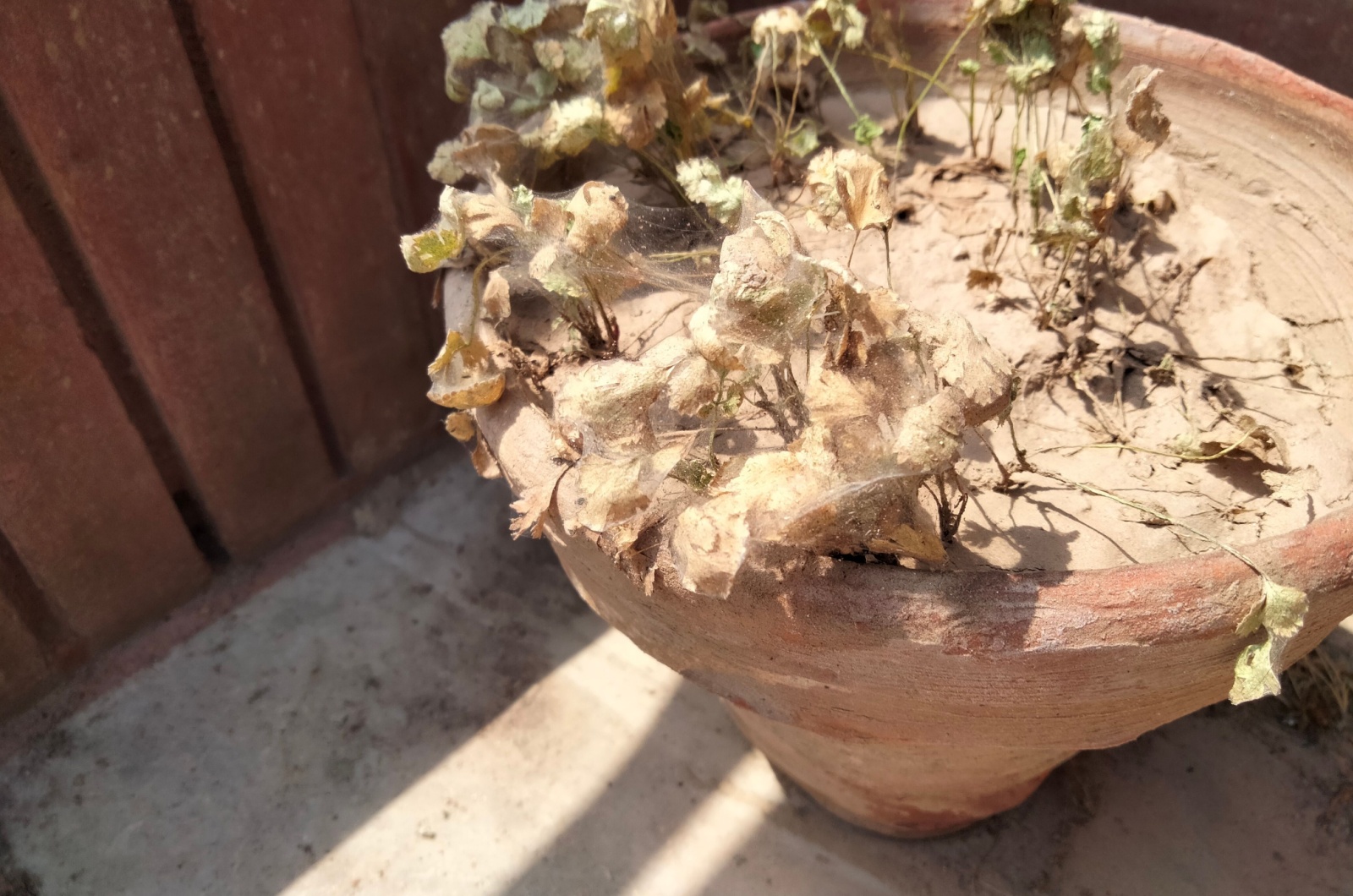Although cilantro is a staple of Mexican and Asian cuisine, it’s actually a versatile herb that can thrive in various climates, from chilly ones like those in Minnesota to sunny Florida weather.
Cilantro is relatively easy to grow, but it does come with its fair share of challenges. It sprouts quickly, which is great, but it also has a tendency to bolt prematurely. Plus, it doesn’t stay fresh in the fridge for very long.
Trust me, once you experience its starring role in your salsas and salads, you’ll understand what I am talking about!
Just picture yourself plucking cilantro from your very own garden and sprinkling it over your meals whenever the craving strikes – a spicy food lover’s dream come true!
But don’t let all this scary talk about bolting prevent you from growing cilantro! Roll up your sleeves, follow this guide, and go plant some cilantro!
#1 Pick The Best Location In Your Garden
Let me start by saying that cilantro loves the sun, so when you’re finding a spot for it in your garden, make sure it’s basking in sunlight.
However, if you’re in a hot area, it’s best to give it some shade in the afternoon to keep it from bolting too soon. Planting in pots can also help you control its growing conditions better.
PRO TIP: For the most delicious cilantro leaves, avoid planting during the peak of summer heat. This can cause the plant to bolt prematurely, resulting in leaves with a bitter flavor.
Or Grow It In Your Home
Growing cilantro indoors is a breeze, and is perfect for those who don’t have enough garden space!
Put your cilantro plant in a deep pot with holes in the bottom for drainage. Make sure the room isn’t too warm – keep it under 75°F, away from heaters or sunny windows.
And guess what? You can even try hydroponic systems, where cilantro grows right in the water with a special light. It’s like having your own mini garden right in your home!
#2 Sow Cilantro Seeds Early In The Spring
If you want a great cilantro harvest, make sure you sow the seeds as soon as possible! You’ll usually get your first leaves in about 45 days, with a full harvest in around 100 days.
To ensure your cilantro thrives, start by preparing soil with a pH of around 6.5 and create a perfect environment akin to other leafy greens and veggies.
Plant cilantro seeds with this direct approach:
• Sow them into the soil rather than transplanting seedlings
• Space the seeds 1 to 2 inches apart
• Cover them with around ½ inch of soil
• Keep the soil consistently moist afterwards
And here’s a fun twist: as your cilantro matures, it will produce coriander seeds which will make sure that your precious herb just keeps on growing!
#3 Don’t Skip On A Good Care Routine
You can’t just plant cilantro and call it a day (wouldn’t we all want that?). But instead, you have to provide your cilantro plant with the best growing conditions. There’s no need to break a sweat, though, the process is smoother than you think!
Water your cilantro, especially in the early stages. After about 45 days, your cilantro will be well-established, so you can reduce watering. Still, make sure that the soil is slightly moist, but avoid overwatering at all costs because cilantro doesn’t like wet conditions.
Keep it in full sun until it matures, and then aim for no more than 6 hours of direct sunlight during the day because they can bolt prematurely. If you live in a place where temperatures go above 80 degrees, you’ll have to provide your cilantro with some shade.
Cover your seedlings with a cold frame if you are expecting cold nights because your cilantro is still vulnerable to frost.
Use mulch because it keeps the soil cool as temperatures rise and also acts as a barrier against weeds. You can use straw, but be sure to till shallowly to avoid damaging the roots.
To prevent premature bolting from completely ruining your cilantro, ensure you provide it with full sun and well-drained, acidic soil. Mulching and a good watering routine can help A LOT!
#4 Keep An Eye On Pesky Cilantro Pests!
You are not the only one who likes cilantro!
Unfortunately, its fragrant aroma can invite unwanted guests like aphids. Luckily, these can be easily removed with a simple remedy: a vigorous spray of water.
Another thing that might affect your cilantro is bacterial leaf spot; water-soaked spots with yellowish edges that eventually darken to brown or black are often signs of this disease.
In this case, it’s best to remove your cilantro completely and avoid composting to prevent further spread. Don’t worry, this can be easily avoided just by enhancing air circulation and watering them at the bottom instead of overhead.
Also read: This Simple Ingredient Can Protect Your Plants From Aphids
#5 Harvest Only When Your Cilantro Is Fully Ready
The best moment in growing cilantro is picking its lush leaves!
Once your cilantro stalks are about 6 inches long, it’s time for harvesting – carefully cut off the leafy stems near the base, making sure not to take more than a third of the plant.
This will help it keep growing. Or, if you prefer, you can cut the whole plant, leaving about an inch of the stem to regrow later.
You see, growing cilantro is a breeze, but only if you follow a good care guide!
By providing well-draining soil, full sunlight, and regular watering, you’ll soon be harvesting fresh cilantro ready to be used in all culinary delights.
Remember, cilantro loves to be picked regularly to encourage continuous growth, so don’t hesitate to snip and enjoy!

